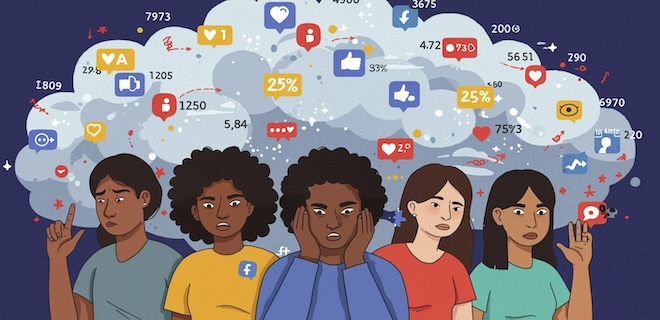
As influencer marketing surges past $24 billion, brands face a critical choice: chase inflated metrics or invest in authentic, underrepresented creators who drive real impact.
Influencer marketing is projected to exceed $24 billion in global spending by the end of 2025 . As brands invest more heavily in digital creators, concerns are increasing—not just around return on ad spend, also but around authenticity, access and equity. The rapid commercialization of influence has created fertile ground for both innovation and exploitation.
While influencer fraud is frequently framed as a financial issue, its consequences run deeper, affecting the entire ecosystem. Fake influencers aren’t just misleading brands. They are displacing legitimate creators, particularly those from underrepresented communities. In a digital economy where visibility is currency, inflated numbers and artificial personas distort who gets seen, supported and paid.
A 2023–2024 report from an influencer marketing platform suggests that nearly half (49%) of Instagram influencers engage in fraudulent activities such as purchasing followers, engagement or comments. Furthermore, 68% use tactics to sustain engagement rates that appear organic, making detection difficult without advanced tools. These inflated metrics enable fake influencers to secure brand deals.
Consequently, authentic creators—often growing their audiences gradually—are regularly sidelined in favor of accounts with inflated metrics and manufactured engagement.
Fraud overload
Research increasingly shows that underrepresented creators—particularly Black, Latina and LGBTQ+ influencers—face systemic barriers, even when their engagement and performance equal or surpass that of their peers.
This dynamic is exacerbated as cultural trends pioneered by marginalized communities are often monetized disproportionately by white or non-queer influencers who appropriate the style without enduring the same social barriers.
Leaked internal documents revealed TikTok’s content moderation practices deliberately limited the reach of videos from LGBTQ+, disabled, and plus-sized users under the guise of “reducing bullying risk,” effectively suppressing marginalized voices.
According to GLAAD’s 2024 Social Media Safety Index, 40% of LGBTQ+ creators reported unexplained post removals or shadowbanning—an increase from 35% in 2023.
Conversely, fake influencers with fabricated personas often benefit from algorithmic boosts driven by rapid engagement, rather than authentic content. This structural bias disadvantages genuine creators, especially those whose work reflects lived experience and cultural nuance.
Despite repeated warnings, some brands still prioritize superficial KPIs like follower counts and likes, creating opportunities for fraud. A 2023 Modash report estimated that about 45% of influencers with over 100,000 followers exhibit signs of artificial audience growth.
And while platforms have taken steps against fraud—Meta introduced paid verification in 2023—there hasn’t necessarily been much improvement. Fraudulent accounts can buy credibility, diluting the blue checkmark’s significance as a mark of genuine influence.
The status quo is alarming: brands that neglect audience authenticity risk funding disinformation, squandering marketing dollars and overlooking authentic creators who truly drive conversions.
How to Fix It: Toward Authenticity and Equity
Fixing the problem requires both technological safeguards and a commitment to equity in influencer selection:
- Employ fraud detection tools alongside diverse sourcing methods. Platforms like CreatorIQ and Modash help flag fake engagement, but brands should also cultivate direct relationships with creators via networks such as #DiverseCreators.
- Shift KPIs from vanity metrics toward meaningful impact indicators. Prioritize branded search lift, saves, click-through rates and quality of community engagement.
- Integrate DEI considerations into campaign briefs upfront. Treat creator diversity as a strategic advantage; brands like Sephora and Nike have set measurable DEI benchmarks for influencer campaigns.
- Standardize equitable compensation. Tools such as FYPM (“F*** You Pay Me”) and Clout Jam assist brands in verifying fair pay and closing race- and gender-based wage gaps.
The rise of fake influencers is not just a marketing challenge. It’s a human one. Behind every missed opportunity and undervalued campaign lies a real creator, often from a marginalized community, whose voice is eclipsed by inflated metrics and manufactured personas.
When brands reward inauthentic engagement, they not only waste resources.They forfeit genuine connections with audiences through creators who offer authentic stories, cultural insight and meaningful influence. These voices shape trends, build trust and reflect the diversity of our world.
As marketers, we must do better. That means investing not only in transparency but in fairness, representation and care. Influencer marketing at its best isn’t merely about reach. It’s about connection. And connection happens only when we recognize, respect and amplify the real people behind the content.